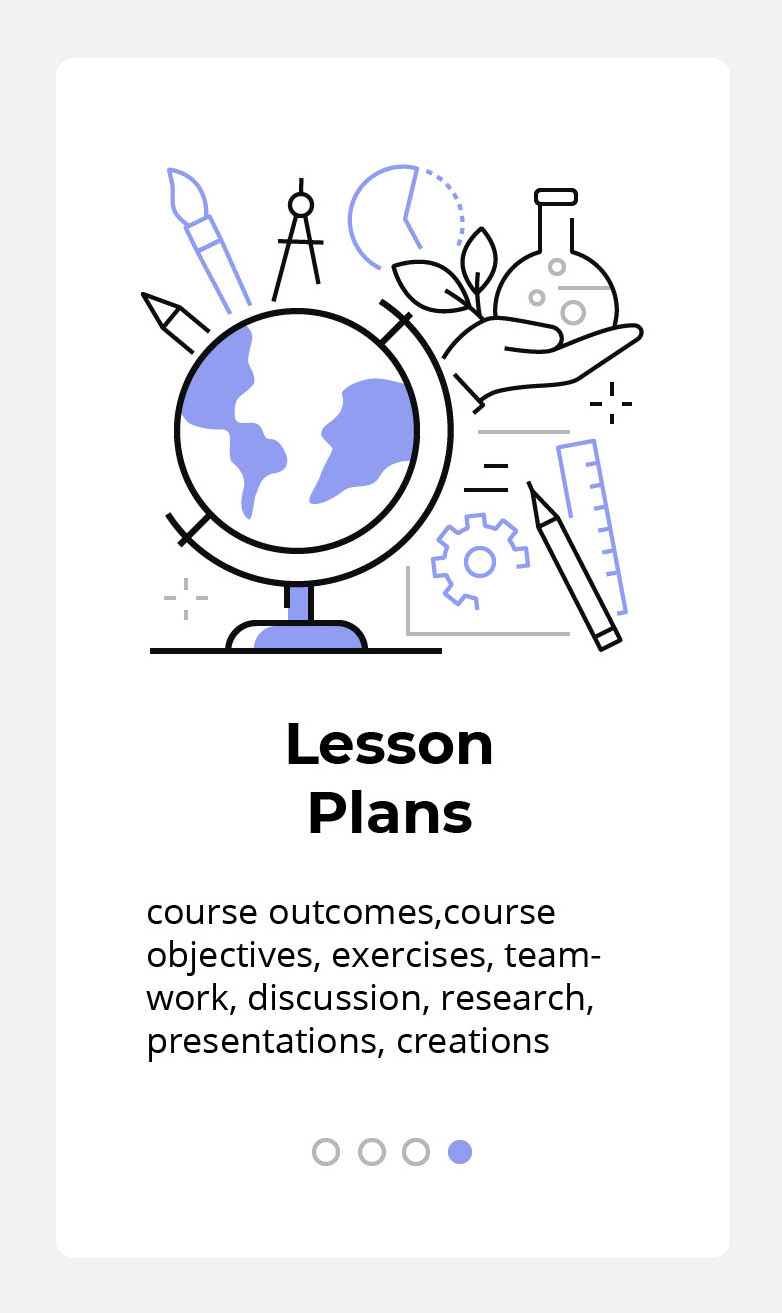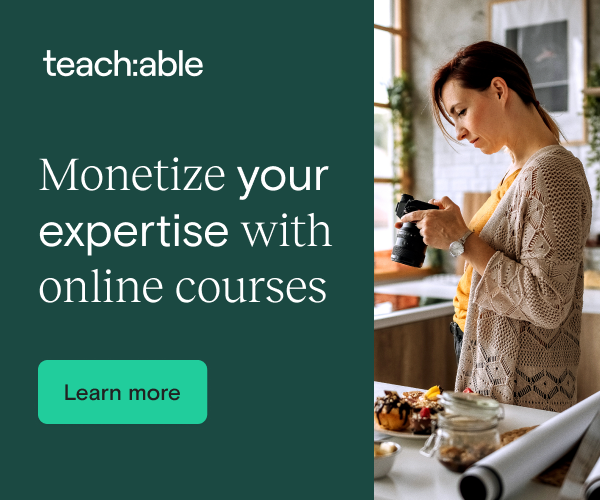Create Your Online Class by Teaching to Outcomes and Objectives
This simple structure helps you confirm your class is teaching the skills you want it to.

Many of us have the knowledge and skill to teach something about our profession to others, but not everyone has the tools to turn that knowledge and skill into a curriculum that will stick. Too many workshops and classes reside in the “show and tell” category – “I’ll show you what I do and tell you how I do it. Best of luck!” This approach to teaching rarely results in skills that stick with the learner, but there is another way. In this article, I’ll demonstrate how teaching to outcomes and objectives helps you translate your knowledge and skill into a powerful curriculum AND that will result in impactful learning for your students.
What is Teaching to Outcomes and Objectives?
Outcomes and objectives are different from one another. An outcome is something the learner is able to do when they have completed your class. It is a purpose or goal that is more or less concrete. The outcome should be able to be measured and evaluated. An objective is smaller, a skillset within a lesson plan that builds a component toward mastery of the objective. The educator uses objectives to build up to measurable outcomes. Teaching to outcomes and objectives means structuring your class around specific skills that together allow you to increase knowledge, skills, and abilities in your area of expertise.
Develop a Curriculum
Access a course, workshop and curriculum framework used by colleges use to create outcome-based training.
When your students succeed, so do you!
Read the guide.
Teach Your Course
Try Teachable. With easy module setup, landing pages, billing, and messaging included, you can set up your school and begin offering classes in a matter of hours or days! Use our affillate links to start your school today!
An Example of teaching to Outcomes and Objectives:
drawing outcome:
Upon completion of the course, the learner will be able to render and model a scene in three dimensions using charcoal from observation, render proper foreshortening and perspective
drawing objectives:
utilize linework to illustrate forms in dimensional space
give forms dimension using shading and tone
create and apply 1 and 2-point perspective grids in order to scale objects in space
use sighting measurement techniques to foreshorten objects in space
But what about outcomes that are more theoretical?
Outcomes and objectives for an online class can be applied to something like applied ethics or philosophy.
Let’s create some.
Business ethics outcome:
At the end of this workshop you’ll be able to articulate a thesis supporting an ethical framework for your industry. You’ll utilize elements like values, morals, social and professional norms to construct an argument for a code of ethics that could be adopted by a professional organization or a group of peers.
Business ethics objectives:
differentiate morals and values from ethics
describe roles and responsibilities in your industry
evaluate frameworks of accountability within a current code of ethics
identify how much latitude an ethical framework allows individuals working in the profession
In both examples, you can see how objectives ladder up toward an outcome. Working with and mastering the objectives provides tools for the learner to demonstrate the outcome.
Some people prefer to use one to three outcomes in a class, depending on how long it is, and then I create five to fifteen objectives, the latter being on the high end.
Building exercises that are teaching to outcomes and objectives in your online class.
Activate your outcomes and objectives with exercises. Exercises often include a demonstration portion, and that’s where the instructor’s capacity to demonstrate comes in. But it’s important for the educator to demonstrate “just enough” and then get out of the way, activating the learner in the learning process.
I often use a related example, but not the exact one. For example, when I teach a drawing class I will set the stage with some objects, then give a demonstration. On the first day it’s all about line work. I’ll use boxes, tubes, cloth, driftwood and maybe some crumpled paper to have some variation in texture, then I’ll talk about how i set it up to create visual interest, then I’ll demonstrate how I “frame” what I want to draw, then use sight techniques to plot out some starting points, then start to draw contour lines to position everything on the page.

At that point, I say, “let’s take down my display, and in groups, you’ll set up your own displays. Work together to make sure everyone has something interesting to look at, then we will check in on framing before we draw.”
The exercise follows the demonstration and empowers students to “do it themselves.” In an online class this is pretty easy. Simply make space between a demo video and the next exercise. Provide tips for setting up a drawing display. You can even invite students to send you a photo of their display and their finished drawing for feedback.

Creating a comprehensive lesson plan teaching to outcomes and objectives
To build a full lesson plan you frame each lesson around one or more objectives. Some objectives can’t be covered in a single session, but become part of one or more sessions. When planning each session, which could constitute an online module containing videos, reading, and activities or exercises. Some people like to work down from the objectives, while others like to build from outcomes up to the overarching objective.
Here are some common exercises in a drawing class and how they ladder up through objectives to outcomes
exercise: explore line qualities and contour lines by drawing a crumpled paper bag.
objective: use lines to describe three-dimensional shapes on a two-dimensional surface.
outcome: realistically draw objects in space from observation.
exercise: utilize tone and shadow to realistically represent objects sitting on a desk.
objective: render objects resting on a plane using shape and tone
outcome: render a composition with objects in realistic space from observation
These exercises build toward our larger objective of rendering a scene from observation.
What is the best format for offering an online class and teaching to outcomes and objectives?
One of the best options available today is Teachable. It is more than a classroom. It handles all of your transactions together, allowing you to create informational pages, a seamless purchase and checkout process, send emails to those who have signed up for your classes, bundle multiple courses into a special offer, and even sell downloads like worksheets, templates, and digital booklets.
Teachable also has a robust curriculum to provide ideas or even learn how to run a class or workshop from the ground up. Whether you are a veteran instructor or a first-time workshop leader with a great idea that can change the world, Teachable provides a seamless experience AND is the most recognized provider of quality online learning experiences. Their templates are easy to use and update.
Once my curriculum was written and produced, I was able to upload and open my class for students in under a day.
Want to try out Teachable? Register with our affiliate link and get 10% off Teachable Pro.
Not ready for Pro, see all of the paid plans and find the right plan for your class.
Do you have a class already prepared and want to effectively promote it? Read the ultimate guide to successfully launch and market your class.
Want to learn more about brand development?
Increase your ability to create brand platforms and brand communications frameworks by taking my class: Brand Building to Create a Big Impact. Only on Teachable!
Stay Connected with Murdock Media Production!
If you like this content, subscribe to our YouTube channel for more on teaching, story development, brand storytelling, and brand archetypes.
Drop me a line with the form below to let me know how your brand building is going. I look forward to seeing how you develop your audience on your own unique teaching journey.



